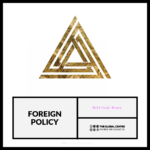The Nexus Reports provide comprehensive evaluations of country-specific risks and opportunities, focusing on biodiversity, ecosystem services, climate change vulnerabilities, socio-economic risks, the food-water-energy nexus, and exponential technologies. Drawing on authoritative sources, these reports offer tailored policy recommendations, detailed analyses, and practical case studies, integrating global scientific research to manage risks and drive sustainable development
Nexus Observatory
Political Risks
Welcome to GCRI’s Political Risks Nexus, the definitive resource for orchestrating NE driven analytics, AI/ML pipelines, and multi-sensor geospatial intelligence to safeguard communities and governance structures. In an era where corruption, humanitarian crises, and geopolitical tensions can erupt into system-wide meltdowns, our parametric finance mechanisms, meltdown-lens scenario modeling, and cross-disciplinary skill-building equip public agencies, corporations, and NGOs alike to anticipate threats, maintain institutional integrity, and protect human rights. By uniting technology, policy design, and humanitarian insights, we transform precarious political landscapes into platforms for equitable, stable development
Satellite Fusion
Aggregates multi-orbit imagery into a consolidated feed monitoring hotspots and tensions. AI-driven dashboards highlight emerging risks, resource mobilizations, or infrastructure blockades in near-real time. Facilitates swift alerts and context for diplomatic, security, and humanitarian interventions
Hyperspectral Insight
Acquires high-resolution spectral data from cutting-edge sensors to detect subtle ground changes. Machine learning pinpoints potential conflict triggers—armament buildup, covert resource exploitation, or sabotage. Averts escalations by identifying unusual activities that align with unfolding political tensions
GeoAI Modeling
Deploys deep learning with GIS layers to forecast political instability zones, extremist pockets, or border disputes. Multiscenario analysis merges economic, social, and climate variables for integrated meltdown prevention. Guides government, NGO, and corporate strategies in bridging security, governance, and local resilience
Parametric Triggers
Builds upon NE-based intelligence to set automated thresholds for regional strife, crisis surges, or large-scale displacement. Releases immediate crisis management funds or rapid alerts when critical indicators spike above normal. Ensures agile resource allocation among diplomatic channels, law enforcement, and conflict resolution bodies
Digital Twins
Constructs virtual replicas of political landscapes—capitals, strategic regions, contested borders. Blends live satellite data, local feeds, and NE simulations to test meltdown scenarios—displacement, conflicts, or policy collapses. Informs strategic contingency planning, peacekeeping logistics, and robust governance frameworks
Innovation Labs
Runs specialized cohorts applying NE analytics to generate solutions for complex political challenges. Combines parametric finance strategies with real-time risk data to design conflict-prevention models. GCRI-endorsed certifications validate advanced proficiency in meltdown avoidance, security synergy, and peace-building
Multisensor Mosaics
Fuses radar, optical, and thermal captures for a unified map of politically sensitive zones. ML-based classification flags migration flows, forced encroachments, or key infrastructure sabotage. Enables near-real-time intelligence for diplomatic missions, cross-border relief agencies, and conflict monitors
Edge-Cloud Synergy
Runs AI modules at remote watchers—border cams, field sensors—and NE cloud clusters for broad coverage. Issues rapid warnings if suspicious troop movements, mass displacements, or sabotage plots are detected. Minimizes latency, fosters decentralized crisis response, and scales advanced meltdown analytics in the cloud
Anomaly Tracking
Applies time-series ML on historical EO archives and socio-political data to pinpoint abrupt shifts—civil unrest, expansions, or critical infrastructure. Auto-triggers parametric coverage for immediate diplomatic or peacekeeping mobilization if indicators exceed stable thresholds. Correlates diverse signals—economic, demographic, climate—to reveal multi-layered political risk factors and guide robust policy decisions
Trusted By World Leaders
Our leadership is earned through proactive, cutting-edge solutions and initiatives that tackle urgent challenges while balancing immediate impact with long-term sustainability. Strengthened by strategic partnerships with global powerhouses, GCRI sets a new standard for protection and progress in an era of unprecedened risks and opportunities

Our National Working Groups (NWGs) converge to shape a future defined by resilience , innovation , and collaboration. By uniting diverse perspectives through a seamless hybrid model, we ignites breakthrough innovations and fosters dynamic partnerships that secure a brighter, more sustainable future for all
Unlocking the Power of Spatial Finance 🌌 for Disaster Readiness 📡
Transforming risk management by integrating DRR, DRF, and DRI into a seamless, proactive system. Leveraging cutting-edge geospatial analytics and innovative financial triggers, NE enables real-time insights and rapid resource mobilization to build resilient communities and drive sustainable growth
Humanitarian Coordination & Rapid Relief
Leverages NE data integration to merge real-time Earth observation, displacement tracking, and parametric finance for accelerated aid. Promotes cohesive alignment among government agencies, NGOs, and philanthropic donors, ensuring timely resource deployment in conflict or disaster zones. Course-based cohorts enhance logistics collaboration, bridging geospatial analytics and multi-stakeholder negotiation to stabilize crisis-affected populations
Election Integrity & Civic Engagement
Contested elections or manipulated voting can trigger large-scale public tensions. By fusing NE scenario simulations, social sentiment analysis, and parametric expansions, GCRI fortifies electoral resilience, maintaining transparent processes. High-level training programs focus on strategic communications, inclusive civic outreach, and advanced data interpretation to safeguard electoral integrity
Conflict & Peace-Building
Internal strife or cross-border disputes may destabilize governance frameworks or overshadow humanitarian efforts. NE integrates geospatial conflict data with parametric finance, streamlining negotiations and conflict reduction mechanisms. Micro-credential modules highlight advanced conflict resolution approaches, uniting AI-based insights with diplomatic collaboration to achieve lasting peace
Governance Collapse & Administrative Vacuum
Power vacuums, failed states, or abrupt leadership crises can degrade essential public services. NE scenario modeling merges real-time intelligence on key ministries or municipal structures, while parametric expansions bridge immediate governance gaps. Structured capacity-building ensures transitional stability, linking HPC-level data insights to on-the-ground institution building for robust administrative continuity
Civic Infrastructure & Public Resilience
Aging or inadequate infrastructure can incite public unrest and severely diminish living standards. NE synergy employs satellite engineering scans and parametric expansions, replacing failing utilities or upgrading core civic systems once thresholds are crossed. Urban planning labs integrate advanced design and EHS compliance, blending HPC-level data for human-centered public works and equitable service delivery
Anti-Corruption & Fiscal Accountability
Corruption undermines governance, disrupts social services, and fuels civic unrest across regions. NE anomaly tracking in public financial flows, paired with parametric triggers, activates corrective measures when corruption indicators exceed established thresholds. Cohort-driven labs strengthen open data, e-governance methodologies, and robust accountability frameworks that reinforce public trust
Policy & Legislative Cohesion
Fragmented or outdated policies can ignite micro-conflicts that escalate into larger governance crises. NE synergy unifies cross-agency data streams, identifying legislative gaps and enabling parametric funding to address critical policy voids swiftly. Customized programs empower lawmakers, advisors, and civic leaders to adopt evidence-based drafting, forging consensus around dynamic governance priorities
Community Empowerment & Social Equity
Deep socio-economic disparities often spark public unrest or large-scale disruptions. NE analytics combine local census and resource distribution data with parametric triggers to pinpoint and address neglected areas. Educational initiatives guide policymakers, NGOs, and corporates in applying data-driven equity solutions, bridging HPC-grade insights with community-focused outcomes
Forced Migration & Internal Displacement
Political violence or deteriorating basic services can displace entire communities internally or across borders. NE synergy harnesses satellite imaging to map migration flows, enabling parametric triggers that unlock shelters, relocation support, and streamlined resource channels. Training cohorts equip regional authorities with technical and humanitarian strategies, ensuring organized relocations and social reintegration
Media & Communication Integrity
Widespread misinformation or partisan narratives can diminish social cohesion and erode institutional trust. NE watchers combine social media analytics with parametric outreach strategies, intervening when disinformation indices surpass safe margins. Micro-credential programs merge HPC-level data scrutiny, editorial checks, and evidence-based policy to preserve transparency and public confidence
Future Innovation Labs
Innovation Lab
Discover;
Learn;
Build;
We support innovation, collaboration and knowledge-sharing amongst our members, partners and the broader research, development, and education communities. Our WILPs streamline the identification, mitigation, and evaluation of Risks, followed by the optimal use of GRIx to tackle Issues and manage adverse impacts. They provide secure network platforms that enable citizens to participate in MPM and use iVRS to report risks and values anywhere. Risk Pathways deliver out-of-the-box CRS functionality to meet institutional requirements, including SCF taxonomies for digital-green skills, compliance frameworks and real-time validation systems. They help members and QH stakeholders with DICE to navigate essential resources and find the right levers across the public-private-planet landscape.
MPM
Integrated pathways for existing national portfolios on the right to inclusive education, skills development, and career mobility through LLL for all
CRS
Rewarding participation with utility value across the network to increase interoperability and career mobility
DICE
Next-generation of internet for risk and innovation in pluralistic societies
GRIx
Open source standard indexing system for linked open data set about global risk and humanitarian crisis.
iVRS
Stakeholder engagement and reporting mechanism for Environmental, Social and Governance (ESG) risks and impacts
SCF
Frameworks, skills taxonomies, competencies and policies for the twin digital-green transition
Research
0%
Design
0%
Innovation
0%
Acceleration
0%
Policy
0%
Instability Risks
10 Steps
- Unlock “Risk Management” 1 time
- Complete the lesson Introduction to Political Instability
- Unlock SDGs
- Publish a proposal on Instability Risks
- Reach Political Impact Assessment (PIA) Level I
- Reach Financial Impact Assessment (FIA) Level I
- Reach Social Impact Assessment (SIA) Level I
- Reach Environmental Impact Assessment (EIA) level I
- Reach Systems Level Impact Assessment (SLIA) Level I
- Join Hackathons
Trades Risks
10 Steps
- Join “Risk Management” Streams
- Complete the lesson Introduction to Trades
- Unlock Partnership Issues
- Publish a proposal on Trades Risks
- Reach Political Impact Assessment (PIA) Level I
- Reach Financial Impact Assessment (FIA) Level I
- Reach Social Impact Assessment (SIA) Level I
- Reach Environmental Impact Assessment (EIA) level I
- Reach Governance Impact Assessment (GIA) Level I
- Join Hackathons
Sovereign Debt Risks
10 Steps
- Join “Risk Management” Streams
- Complete the lesson Introduction to Sovereign Debt
- Unlock Inequality Issues
- Unlock Justice Issues
- Publish a proposal on Sovereign Debt Risks
- Reach Political Impact Assessment (PIA) Level I
- Reach Financial Impact Assessment (FIA) Level I
- Reach Social Impact Assessment (SIA) Level I
- Reach Environmental Impact Assessment (EIA) level I
- Join Hackathons
Foreign Policy Risks
11 Steps
- Join “Risk Management” Streams
- Complete the lesson Introduction to Foreign Policy
- Unlock Justice Issues
- Unlock Partnership Issues
- Publish a proposal on Foreign Policy Risks
- Reach Political Impact Assessment (PIA) Level I
- Reach Environmental Impact Assessment (EIA) level I
- Reach Social Impact Assessment (SIA) Level I
- Reach Governance Impact Assessment (GIA) Level I
- Reach Political Impact Assessment (PIA) Level I
- Join Hackathons
Sanctions Risks
10 Steps
- Join “Risk Management” Streams
- Complete the lesson Introduction to Sanctions
- Unlock Justice Issues
- Publish a proposal on Sanctions Risks
- Reach Political Impact Assessment (PIA) Level I
- Reach Financial Impact Assessment (FIA) Level I
- Reach Social Impact Assessment (SIA) Level I
- Reach Environmental Impact Assessment (EIA) level I
- Reach Governance Impact Assessment (GIA) Level I
- Join Hackathons





